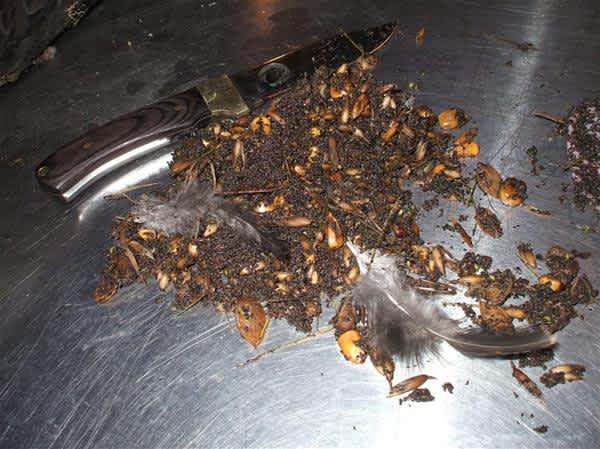Yamaha Outdoors Tips: Check Your Turkey Craw
Yamaha 10.08.12

I try to check the crop (a.k.a. “craw”) of every wild turkey I kill, spring or fall, including other dead birds in camp. Why? It helps tell me and my buds what primary food sources turkeys have been hitting.
Why Check It?
In truth, chances are you won’t find much in a spring gobbler’s crop. He’s too busy chasing down hens and strutting hard with breeding in mind. A recent Maine spring longbeard had just a few blades of grass and a single acorn in his – though I killed him at mid-morning, he still hadn’t been eating much that day.
In fall it’s way different. First off, feeding is a primary activity for both autumn gobblers and hens. The first few hours after fly-down and the last few hours of daylight before roosting see the most feeding activity.
In many fall turkey states, either-sex birds are legal (check your current regulations). Kill one, check the craw contents, and you’ll know what and where others in that flock have been eating.
What Is It?
By definition, a crop is a thin-walled expanded portion of the alimentary tract used for food storage prior to digestion.
Where Is It?
In the wild turkey, you’ll find it above the breast bone, but below the neck. You can gently cut the baseball-sized sac to look at what’s in there while it’s still attached to the bird, or even pull it all free before opening it up.
For the last tip on how to the turkey craw to better plan your turkey hunt, please visit Yamaha.com.

